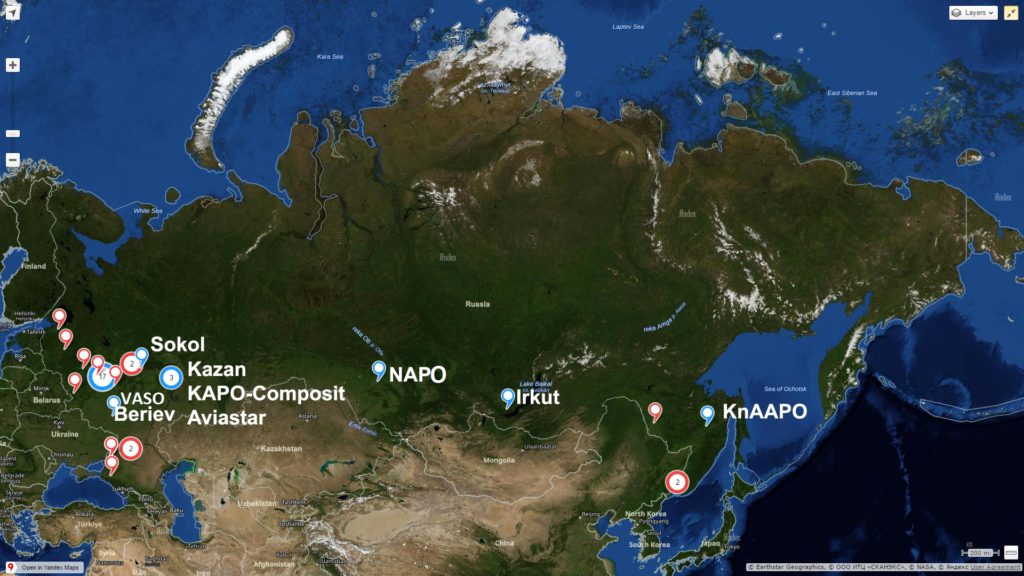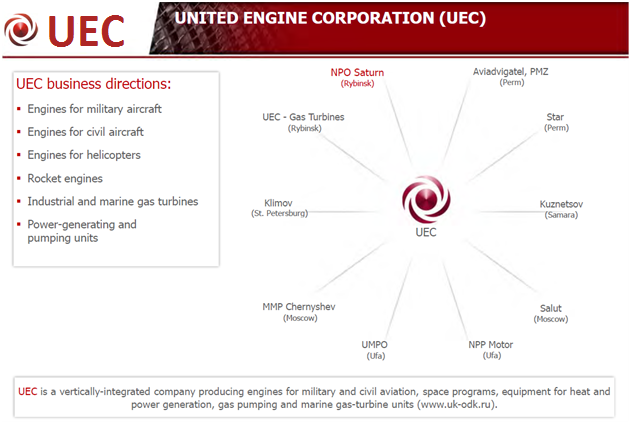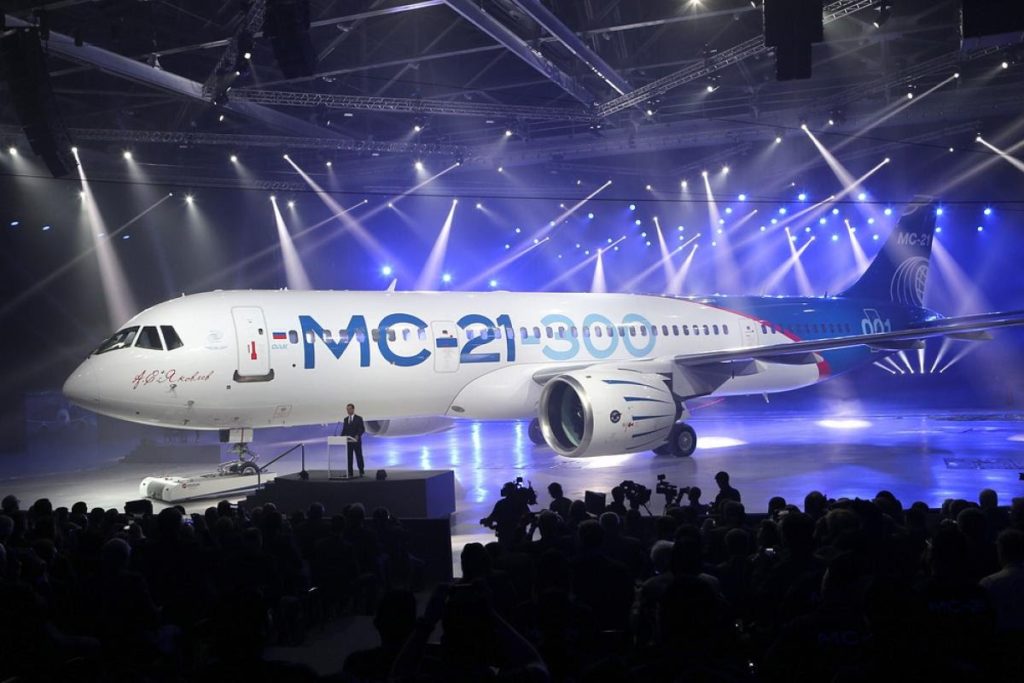Leeham News and Analysis
There's more to real news than a news release.
Russian-Chinese wide-body: Program responsibilities
By Bjorn Fehrm
Subscription required.
Introduction
September 29, 2016, ©. Leeham Co: We will now finish our series about the Russian-Chinese wide-body with looking at who will have what role in the program.
As we described in the initial article, “Background and outlook,” Russia and China have vastly different competencies when it comes to making a state of the art wide-body aircraft.
Russia has made airliners since the 1930s, including wide-body jets. China did not design its own jet aircraft (military or civil) until the mid-1980s. Most of the aircraft produced still today in China have their origin in Russian designs.
At the same time, we saw in the article about the market demand for the aircraft that the Chinese market is 90% of the home market. This makes for China demanding important parts of the aircraft’s production, and China has the money to invest in production facilities.
All this will influence how different parts of the project will be shared between Russia’s United Aircraft Corporation (UAC) and Commercial Aircraft Corporation of China (COMAC).
Summary:
- Russia and China enter the wide-body project with widely different knowledge bases.
- Russia has long time knowledge on how to develop and produce aircraft and their engines.
- China on the other hand has the market for the aircraft.
- China also know a lot about serial production and have money to invest. Read more
Bjorn’s Corner; The Russian civil aircraft engine companies
September 23, 2016, ©. Leeham Co: In our Corners on East bloc aeronautical industries, we now look at the main Russian civil aircraft engine companies. As with the aircraft side, there is one overall Russian engine company since 2008, United Engine Corporation (UEC), Figure 1.
This is a state-owned holding which incorporates 80%of the gas turbine engine companies from the Soviet times, employing 80,000 people.
The aim is to coordinate and optimize Russia’s engineering and production resources around present and future gas turbine engines for Aeronautical, Naval and Stationary use.
Soviet and Russian engines have historically been named after their chief designer in the design bureau. We will now describe the main entities in UEC that work with airliner engines. Read more
Russian-Chinese wide-body: Aircraft performance
By Bjorn Fehrm
Subscription required.
Introduction
September 19, 2016, ©. Leeham Co: In Part 4 of the article series, we put together an assumed complete Chinese-Russian wide-body aircraft with fuselage, wing, engines, etc. It is now time to understand what kind of performance that can be expected, given the data we have from the wide-body partners, Russia’s United Aircraft Corporation (UAC) and the Commercial Aircraft Corporation of China (COMAC).
We will combine these data with the ones we have deduced as plausible to fill the gaps, given the time frame and technology level that UAC and COMAC intend to use.
Out will come a first estimate of what kind of performance such an aircraft can have in terms of efficiency and payload versus range capability.
Summary:
- We can use all the data we have gathered to make a first estimate of the efficiency of the Russian-Chinese wide-body.
- We also have enough information to do a first payload-range diagram and to compare that with the diagram for Boeing’s 787-9.
Bjorn’s Corner; The Russian civil aircraft companies
 September 16, 2016, ©. Leeham Co: In our Corners on East bloc aeronautical industries, we will now look at the main Russian civil aircraft companies. There is one overall company since 2006, United Aircraft Corporation (UAC).
September 16, 2016, ©. Leeham Co: In our Corners on East bloc aeronautical industries, we will now look at the main Russian civil aircraft companies. There is one overall company since 2006, United Aircraft Corporation (UAC).
This is a state-owned holding which incorporates 30 of the main companies from the Soviet times, employing 100,000 people. The aim is to coordinate and optimize Russia’s project and production resources around the present aircraft and the future projects that Russia can afford to drive.

Figure 1. Map of UAC Companies in Russia outside of Moscow region. Red markers are MRO. Source: UAC.
UAC consolidates several company groups that were formed after the fall of the Soviet Union 1990 and up to the formation of UAC in February 2006.
We will now dissect the main UAC groups and companies that are involved in civil aircraft development and production. Read more
Russian-Chinese wide-body: The aircraft, Part 4
By Bjorn Fehrm
Subscription required.
Introduction
September 15, 2016, ©. Leeham Co: In Part 3 of this series, we identified the type and size of wing we would have on a new Russian-Chinese wide-body. It’s now time to go through all the considerations around the engines for the aircraft.
The aircraft would enter the market around 2025. We would have to decide on what size engine that would be needed, what engines would be available at the time and could this project motivate any new engine developments.
Summary:
- The Russian-Chinese wide-body as outlined would require engines in the size class of the Boeing 787-9/10.
- GE and Rolls-Royce have been mentioned as engine suppliers. The question would be: will they offer updated 787 engines or new designs and will Russia compete with its announced engine project for the aircraft?
Bjorn’s Corner: East bloc aeronautical industries
September 09, 2016, ©. Leeham Co: The Western world civil aeronautical industry developed a number of new aircraft (Boeing 787, Airbus A350, Bombardier CSeries, Mitsubishi’s MRJ) or aircraft variants (A320neo, 737 MAX, A330neo, Embraer’s E-Jet E2) during the last 15 years. The last of these projects (A330neo) is entering flight tests within six months.
Over the next 10 years there will be few new Western hemisphere aircraft projects. But there will be action in the east, in Russia and China. We therefore will cover these projects in more and more articles.
To give a background to these articles, I will spend some Corners to describe some of the differences between the Western and Eastern aeronautical industry. A lot of these differences will come from the industry’s history. We will start with Russia’s airframe industry. Read more
Russian-Chinese wide-body; The aircraft Part 3
By Bjorn Fehrm
Subscription required.
Introduction
September 08, 2016, ©. Leeham Co: Having covered the possibilities of reusing parts of the Il-96 fuselage for a new Russian-Chinese wide-body, it’s now time to look at the existing IL-96 wing and how far this is from a modern design.
The intent is not to propose that the existing wing is reused but rather to check the technology level against western designs and how big a leap it will be for the partners to make a modern high performance wing for the aircraft.
Summary:
- The IL-96 wing is roughly on the technological level of the Airbus A340-300 wing with a bit lower aspect ratio.
- The dimensions are close to what is needed for the new wide-body but sweep and aspect ratio needs to be changed for a new wing.
- A wing for a 2025 long range wide-body also need a more modern construction technology than classical aluminum alloys.
Russian-Chinese wide-body: The aircraft, Part 2
By Bjorn Fehrm
Subscription required.
Introduction
September 01, 2016, ©. Leeham Co: In Part 1, we concluded that the existing Il-96 fuselage cross section would be suitable for a new Russian-Chinese wide-body. This means that a lot of experience and existing designs for fuselage sections can be re-used.
Most importantly, it means that mock-ups and cabin sections can be made early in the project to start work on new and better cabin equipment. This is an area where the partners really lag their western competitors.
We will now look at what aircraft capacities can be conceived with the existing Il-96-300 and -400 fuselages and what changes will be necessary to achieve the targeted sizes that Russia’s United Aircraft Corporation (UAC) and Commercial Aircraft Corporation of China (COMAC) have communicated.
Summary:
- The IL-96 fuselage can be re-used for a Russian-Chinese wide-body.
- The existing IL96-300 cabin is on the small side whereas the Il-96-400 cabin is a bit larger than needed.
- The project will likely choose an intermediate size fuselage to reach the targeted 250 to 280 passenger capacity.
Russian-Chinese wide-body: The aircraft
By Bjorn Fehrm
Subscription required.
Introduction
August29, 2016, ©. Leeham Co: We have now covered the capabilities of the joint venture partners for a Russian-Chinese wide-body and its possible market. Now we will look at what kind of aircraft such a cooperation can create, given technology and other constraints.
There have been bits and pieces leaked to media from Russia’s United Aircraft Corporation (UAC) and Commercial Aircraft Corporation of China (COMAC).
We will look at what has been said and combine that with our knowledge of existing and future technological capabilities of the parties to make predictions for what aircraft the project can produce.
Summary:
- The Russian-Chinese wide-bodywill be made to cover the “small wide-body”market.
- Initial size will be a 250-280 passenger wide-body
- The aircraft will be a twin with engines from either GE or Rolls-Royce.
- Range with 280 passengers will be 6,500nm.
Russian-Chinese wide-body: The market
By Bjorn Fehrm
Subscription required.
Introduction
August 25, 2016, ©. Leeham Co: Having dissected the players behind the Russian-Chinese wide-body, it’s time to look at what market such an aircraft aims to capture.
The project participants, Russia’s United Aircraft Corporation (UAC) and Commercial Aircraft Corporation of China (COMAC), say they intend to make a 250-280 seat aircraft with a 6,500nm range.
We will look at what market such an aircraft can address from its Entry into Service (EIS) 2025 and over the next 10 years. We will also discuss the constrains that emerges with UAC and COMAC entering the market as new players.
Summary:
- The Russian-Chinese wide-body covers a market segment called “small wide-body” in the Global market forecast made by Airbus and Boeing.
- Based on data in these forecasts, the dominant market during the first 10 years after a 2025 Entry into Service (EIS) would be a captive Chinese market.




